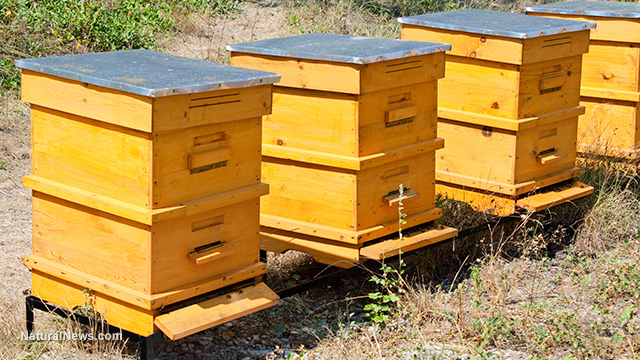Dr. Weeks Comment: We are killing ourselves as we kill the bees.
Mainstream media finally admits U.S. honey is contaminated with glyphosate weed killer (Roundup)
Tuesday, September 20, 2016 by: David Gutierrez, staff writer

(NaturalNews) Freedom of Information documents obtained by the group U.S. Right to Know reveal that the FDA has confirmed the presence of glyphosate contamination in honey being sold on U.S. store shelves.
Glyphosate is the active ingredient in Roundup, the world’s top selling herbicide. Roundup’s explosive commercial success has been largely driven by the use of crops genetically engineered to withstand direct application of the herbicide. In 2015, the World Health Organization’s International Agency for Research on Cancer (IARC) declared the chemical a probable human carcinogen.
The documents show that every honey sample tested by the FDA contained glyphosate residue, in some cases at levels twice those allowed in the European Union (EU).
FDA downplays astonishing findings
Although the FDA conducts annual tests for pesticide residues in many food products, and the U.S. Department of Agriculture (USDA) annually tests produce, both agencies have historically declined to test for glyphosate residue, claiming that the chemical is so safe that there is no need.
In 2014, the U.S. Government Accountability Office criticized the FDA for this policy, and new pressure came with the IARC’s 2015 ruling. A number of researchers conducted their own independent tests, finding glyphosate residues in various grain-based foods, including non-GMO products such as oats. Critics noted that even small amounts of residue can add up to alarming doses given how widespread glyphosate is among foods that are consumed regularly.
So the FDA initiated a “special assignment” this year to test some foods, including honey. Scientists tested honey gathered from across the country sold by brands including Louisiana-based Carmichael’s Honey, Florida-based Leighton’s Orange Blossom Honey and the Iowa-based Sue Bee Honey cooperative.
“It is difficult to find blank honey that does not contain residue. I collect about 10 samples of honey in the market and they all contain glyphosate,” one researcher wrote in an internal email.
Even a brand of honey marketed as “organic mountain honey” contained glyphosate.
The scientists found glyphosate concentrations of 22 parts per billion (ppb) in Leighton’s, 41 ppb in Sue Bee and 107 ppb in Carmichael’s. This is consistent with a prior independent study that found average residue levels of 64 ppb in 41 of 69 honey samples.
What happened when FDA scientist Narong Chamkasem informed his fellow scientists that some of the samples far exceeded the EU tolerance level of 50 ppb, and that technically, any levels of residue violate U.S. law because the Environmental Protection Agency (EPA) has never set an acceptable threshold?
Chris Sack, the FDA’s head of pesticide residue testing, dismissed the glyphosate contamination as only “technically a violation,” and said that he had informed the EPA that they should set tolerance levels for honey. If, as expected, the EPA sets levels higher than 106 ppb, the problem will disappear with the stroke of a pen.
Bees and consumers suffer
Honey farmers expressed distress at the findings. Sioux Honey vice president Bill Huser – whose company markets its product as “100% pure, 100% all-natural and 100% American” – noted that glyphosate gets into honey because it is sprayed on the agricultural fields that bees forage in.
“I don’t understand how I’m supposed to control the level of glyphosate in my honey when I’m not the one using Roundup,” said another honey company operator. “It’s all around me. It’s unfair.”
Research suggests that glyphosate actually functions as a toxin to bees, and may be contributing to declining populations worldwide.
Like the FDA, the USDA also initiated a “special project” to test soybeans for glyphosate residue this year. The findings showed widespread contamination. Similar results have been found by a special USDA division that tests wheat destined for export to countries more skeptical about claims that glyphosate is “harmless.”
Meanwhile, the EPA is still working on a risk assessment report to decide if glyphosate use should be limited. Originally expected in 2015, the report is now due in “spring 2017.”
“There is no sense of urgency around these exposures that we live with day in and day out,” said Jay Feldman, executive director of Beyond Pesticides.
Sources for this article include:
SOURCE : http://www.naturalnews.com/055363_glyphosate_Roundup_honey.html#ixzz4KoufV8PA

